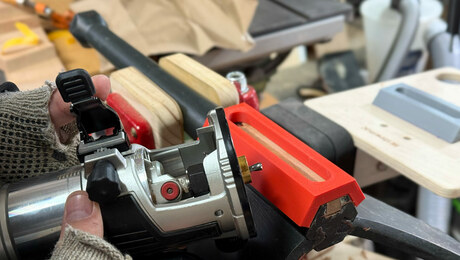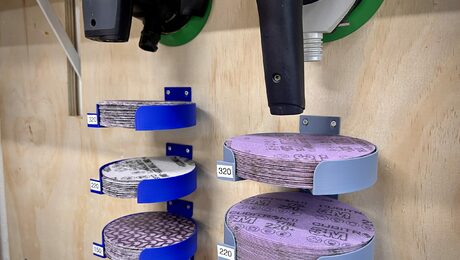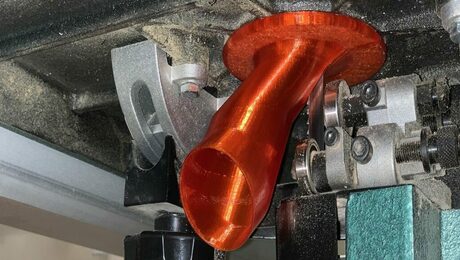In recent years “high tech” tools like CNC routers and 3D printers have become much more accessible for the average woodworker. I’ve been finding that having a 3D printer makes it easy to create fixtures and jigs for woodworking and modeling the objects in SketchUp is really straightforward.
A friend of mine who is not a woodworker, asked me if I could make some low-profile cams for them to use as clamps on a project. My first inclination would have been to go out to the shop and look for some suitable scraps from which to make these things but right now my shop is not available because it’s packed in a storage unit. So the second option available to me is to print them. In this video I’ll show how I modeled the cam for printing.
There’re a few things to keep in mind when modeling for 3D printing. First, in order for an object to be 3D printable it must be what is called a”manifold solid” That is, there must be no holes in the surfaces. In simple terms, SketchUp needs to identify the group or component as “solid”. In order to be considered solid every edge must be shared by exactly two faces. So no stray edges, no holes in surfaces, and no internal faces.
Second, since SketchUp was designed primarily as a tool for architects and is really intended for modeling larger objects, it has a short-edge limitation. That is, endpoints need to be at least 0.001 in. apart in order that SketchUp recognizes them as separate points. If they are too close together SketchUp will consider them coincident and delete one which typically results in missing faces. The simple way to avoid this is to model at a larger size. In this video I do the modeling with units set to meters and enter inches as if they are meters. This makes it possible to create a high level of detail without running into the short-edge limitation.
The slicer I use only imports .stl files using millimeters for the units so for models the I create as inches, I scale them up by a factor of 25.4 before exporting the .stl file. As long as the export units are set correctly this works just fine. There’s no need to scale the objects down to real world dimensions before exporting.
In this video I used a couple of extensions. Here are the links to them.
Curve Maker for drawing the spiral. The Extension Warehouse compatibility list shows this one is not compatible with SketchUp versions beyond 2018 but it works just fine in newer versions.
PathCopy for distributing the “drills” I used to make the holes. This one also shows compatibility up through 2018 but it also works fine in later versions.
I didn’t need it for this model but Solid Inspector2 is very useful for identifying issues with your components if they aren’t solid.
Hopefully you can find something to apply to your modeling or your 3D printing.
-Dave



























Log in or create an account to post a comment.
Sign up Log in